Meet the United States in China, feel poetry and distance Walking the Land of the Motherland Series 1 Comprehensive Chapter (5) G318 Sichuan-Tibet Line Self-Driving Tour Road Book (Part 2)
Elevation diagram of the southern line of the G318 Sichuan-Tibet Line (download pictures online)

Xizang-Lhasa-Potala Palace Square-Potala Palace
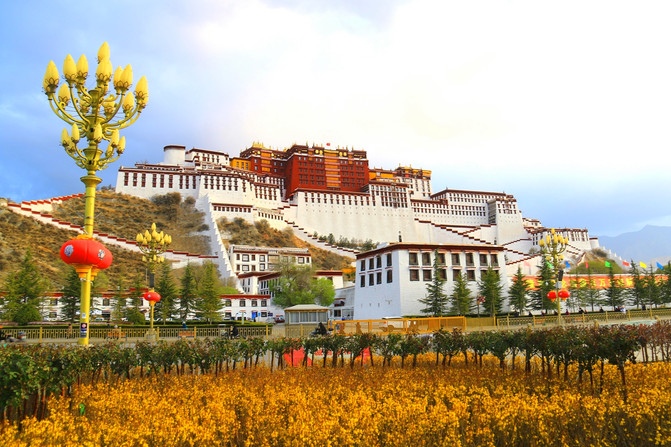
Xizang-Basu-Palong Zangbo River

Sichuan-Batang-Scenery along the way

Xizang-Gongbu Jiangda-Basongcuo-Jiabai Village
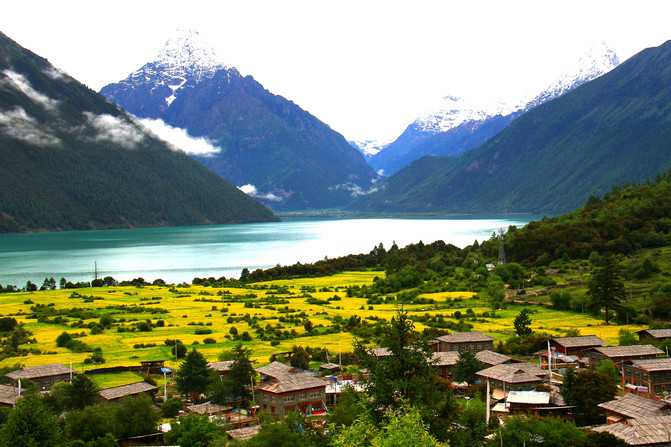
Xizang-Nyingzhi-Bayi District-Gala Village Peach Blossom Garden

Xizang-Basu-318 National Highway Section-Scenery along the way

The G318 Sichuan-Tibet Line is the most essence and most dangerous section of National Highway 318, a Chinese landscape avenue. This section of the road alone is beautiful, complex, changeable and dangerous. The altitude increases sharply from a few meters to more than 5000 meters. Erlang Mountain, Zhuoduo Mountain and other dozens of mountain ranges stand in front of you, accompanied by turbulent rivers such as the Dadu River, Jinsha River, and Lancang River. The towering mountains, magnificent rivers, mountains and snowfields, and forests and glaciers cover almost all natural landscapes, like a visual feast waiting for you. Due to its rich natural scenery, profound cultural heritage, and severe challenges along the way, the G318 Sichuan-Tibet Line has become the most popular and popular self-driving tour route in my country at present.
Xizang-Lhasa-Potala Palace Square-Potala Palace

Xizang-Basu-Ranwu Lake

Xizang-Nyingzhi-Bayi District-Gala Village

Xizang-Nyingzhi-Milin-Suosong Village-Overlooking Nangjabawa Peak

Xizang-Nyingchi-Lulang
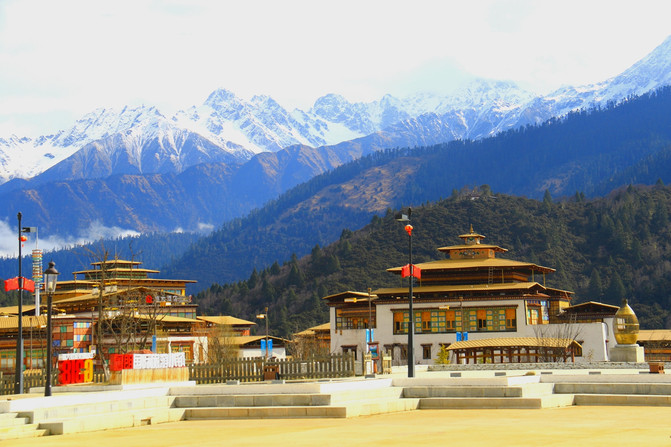
Xizang-Bomi-Gangxiang Nature Reserve-Scenery along the way

Xizang-Lhasa-Jokhang Temple

Xizang-Basu-Ranwu Lake

If you haven't walked through 318, you won't know how difficult the Sichuan-Tibet Road is; if you haven't walked through 318, you won't know the most beautiful corridor in China. The most beautiful scenery is always on the road. G318 Sichuan-Tibet Line, the scenery will never let you down.
Xizang-Lhasa-Potala Palace Square-Potala Palace Night View

Sichuan-Litang-Kazila Mountain Pass-Alpine Meadow

Sichuan-Kangding-Mugecuo (Kangding Love Song Scenic Area)

Xizang-Nyingzhi-Milin-Suosong Village-Yarlung Zangbo River

Xizang-Basu-Laigu Glacier

Xizang-Nyingchi-Lulang

Surprise at the danger and beauty!
Fourth station: Batang-Mangkang-Zuogong (260 kilometers)
After arriving at the Jinsha River Bridge in Zhubalong Township not far from Batang, he climbed mountains and waded all the way, and went through hardships. Finally, he began to enter the realm of Xizang, and was able to experience the complex and colorful Jinsha River, Lancang River and Nujiang River. Scenery of the Three Rivers. Before entering Mangkang, the first county seat in Xizang and the intersection of the Sichuan-Tibet Line and the Yunnan-Tibet Line, at an altitude of 3860 meters, we have to cross the Zongbala Mountain Pass at an altitude of 4150 meters and the Lawu Mountain Pass at an altitude of 4376 meters.
Sichuan-Batang-Jinsha River Bridge
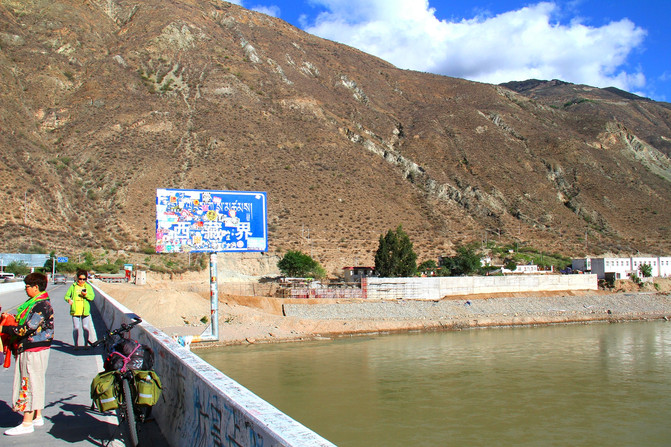
Xizang-Mangkang-G318 Sichuan-Tibet Line-Road Construction Section

Xizang-Mangkang-G318 Sichuan-Tibet Line-Road Construction Section
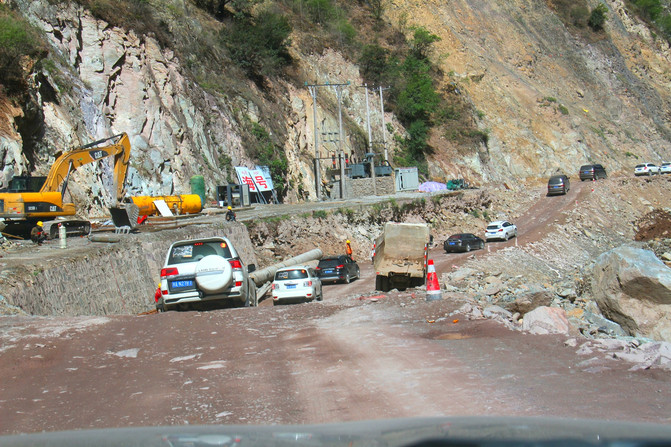
The winding road out of Mangkang is rugged and upward and begins to enter the Lancang River Grand Canyon. The relative drop of the Grand Canyon exceeds 1000 meters. The river is surging rapidly in the deep valley. National Highway 318 runs rugged on the steep cliffs, allowing us to appreciate the high altitude drop and dangerous side of National Highway 318. The Jueba Mountain Pass section, which is not high at sea level, is only 3911 meters. Because of the many sharp turns on the Panshan Road and the poor road conditions, it is a famous dangerous section in the Hengduan Mountains area.
Xizang-Mangkang-Juebashan Pass

Xizang-Mangkang-Jueba Mountain

After that, it will usher in the first alpine pass with an altitude of more than 5000 meters since entering the G318 Sichuan-Tibet line, namely the Dongda Mountain Pass with an altitude of 5130 meters. This altitude is only slightly lower than the famous Mount Everest Base Camp (5200 meters above sea level). On one side of the mountain is the galloping Lancang River, and on the other side of the mountain is Zuogong. This place was also once called the "forbidden zone of life". It was often windy and rainy on the mountains, and even snowed all year round. Due to the harsh environmental and climatic conditions, the road conditions in this area are average. Pay attention to controlling the driving speed and driving carefully for safety.
Crossing this higher mountain pass is a challenge and test for every self-driving G318 Sichuan-Tibet route tourism enthusiast. After going down the mountain, we continued to reach another station, Zuogong County at an altitude of 3750 meters.
Xizang-Zuogong-Dongdashan Pass

Xizang-Zuogong-Dongdashan Pass

tips
1. If you have enough time and interest while passing through Mangkang, you can drive south along National Highway 214 for about 100 kilometers to the Mangkang Ancient Salt Field located in Naxi Ethnic Township. First, you can enjoy the unique scenery of the ancient salt fields on both sides of the Lancang River; secondly, you can experience the hardships of working people who have made salt by local methods along the Lancang River for thousands of years.
2. The road conditions of National Highway 214 are good, and the traffic is far less than the G318 Sichuan-Tibet Line.
3. There are landmark buildings in Dongdashan Pass, so you can take photos. Due to the high altitude here, actions need to be slow when viewing the scenery, and the stay time should be short rather than long to guard against high reactions.
Xizang-Mangkang-Lancang River-Millennium Ancient Salt Field

Xizang-Mangkang-Lancang River-Millennium Ancient Salt Field

Xizang-Mangkang-Lancang River bank-Millennium ancient salt field-Villagers selling self-produced salt

Xizang-Mangkang-National Highway 214-Scenery along the way

Fifth station: Zuogong-Basu-Ranwu (300 kilometers)
The next point for Zuogong is Bonda, which is famous for its Bonda Airport in Changdu City. It is also the intersection of the North-South Sichuan-Tibet Line.
After exiting Bangda and climbing the Yela Mountain Pass at an altitude of 4658 meters, National Highway 318 continues to bend down along the steep ridge here, descending all the way to the Nujiang River, forming the majestic Nujiang River 72 turn. As the only way on the Sichuan-Tibet route, it is more challenging for self-driving tour enthusiasts precisely because of its danger. When driving a car to the mountain, standing on the observation deck and overlooking from a high place, the scenery in front of you made everyone who was there sigh. Driving through Laozui at the end of Turn 72 is also the dangerous Nujiang Grand Canyon section on the Sichuan-Tibet line. The road surface is narrow, there are many sharp turns, and the line of sight is poor. You need to concentrate and move forward slowly. In addition to paying attention to the cars ahead, it is generally not advisable to overtake under circumstances.
Xizang-Basu-Yelashan Pass
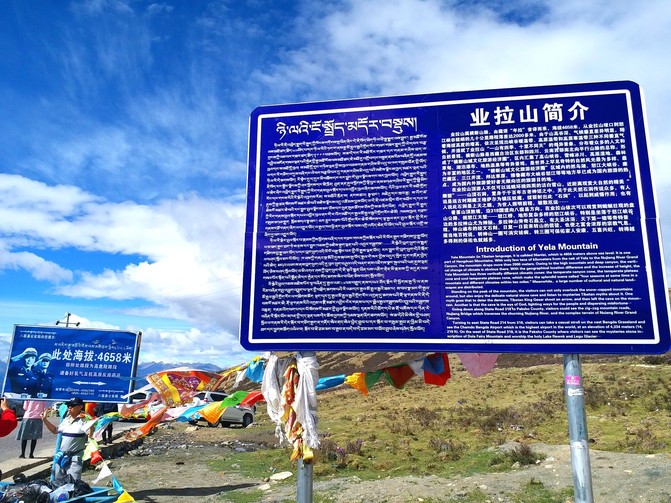
Xizang-Basu-Yelashan Pass

Xizang-Basu-Nujiang Road 72

Xizang-Basu-Nujiang Grand Canyon Section of National Highway 318-Nujiang Tunnel
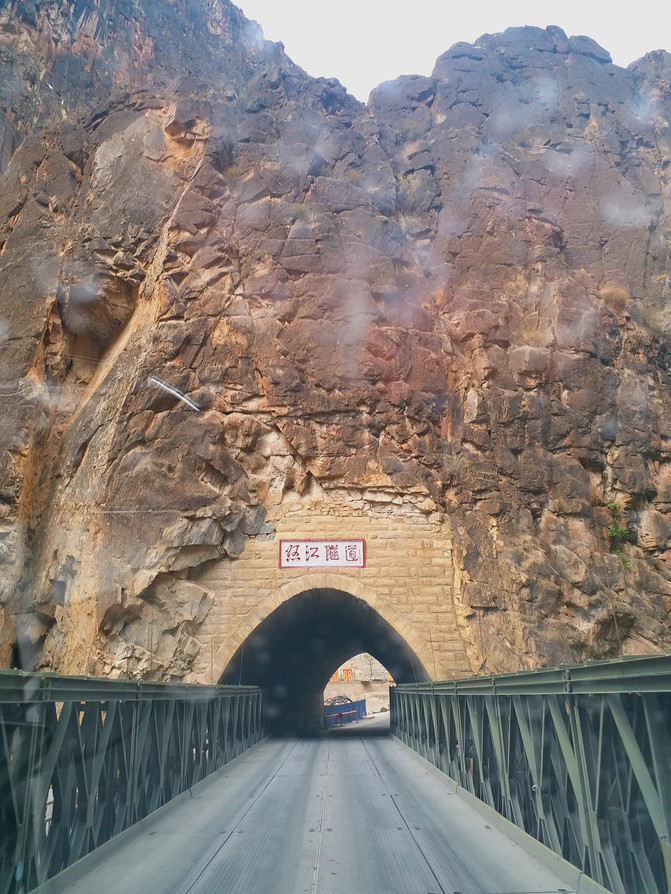
Xizang-Basu-Nujiang Grand Canyon Section of National Highway 318-Laozui

Xizang-Basu-318 National Highway Nujiang Grand Canyon Section-Nujiang River on one side of the highway
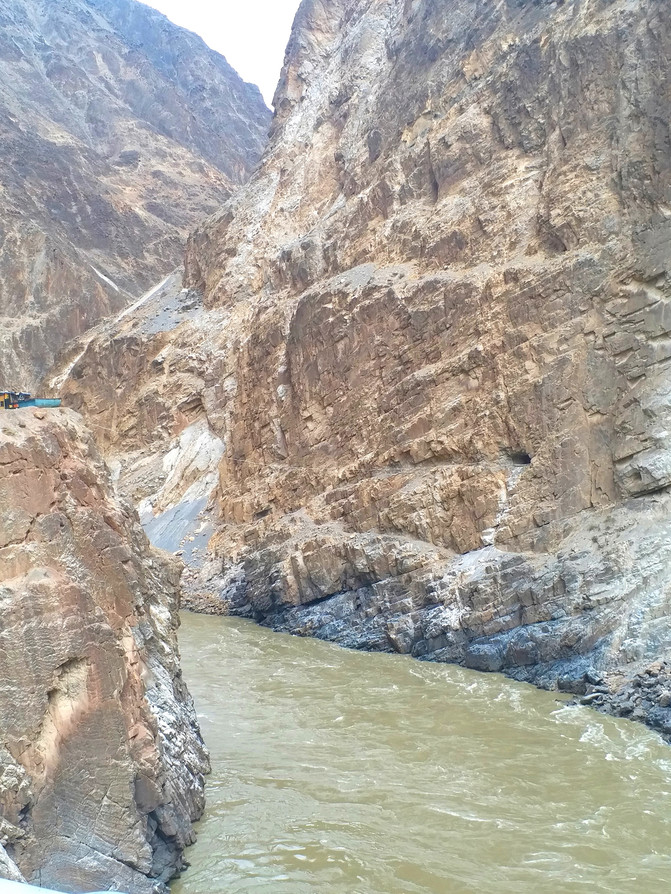
After passing through Basu (3260 meters above sea level), and then crossing the watershed between the Nujiang River and the Yarlung Zangbo River, the relatively gentle pass and the Anjula Mountain Pass at an altitude of 4325 meters, you will enter the Yarlung Zangbo River Basin, which is legendary and mythical. After crossing the Yakou and going down, you will soon arrive at the beautiful Ranwu Lake, which is 3850 meters above sea level. Ranwu Lake has a surface of 22 square kilometers and consists of three lakes connected from top to bottom. It is reflected in snow-capped mountains, meadows, and blue skies. It has beautiful scenery and is a must-see tourist attraction on the Sichuan-Tibet route.
Xizang-Basu-Anjula Mountain Pass

Xizang-Basu-318 National Highway Section

Xizang-Basu-National Highway 318-Scenery along the way

Xizang-Basu-Ranwu Lake

Xizang-Basu-Ranwu Lake

Xizang-Basu-Ranwu Lake Wetland Nature Reserve

tips
1. There is a special observation deck at the No. 72 junction of Nujiang River where you can park and rest to overlook the spectacular scenery of No. 72 junction.
Xizang-Basu-Nujiang Road 72 Guai Observation Deck

Xizang-Basu-Nujiang Road 72 Kuai Observation Platform-Nujiang Road 72 Kuai

2. Ranwu Town has formed a tourist station, with convenient food and accommodation, and high-end resort hotels. There are not only Ranwu Lake and Ranwu Lake Wetland Reserve, but also attractions such as Laigu Glacier and Laigu Village.
3. Although it is basically no problem to refuel along the way now, you still need to develop the good habit of using half of the fuel tank and filling it up at a gas station when you encounter it. Be prepared.
Xizang-Basu-Ranwu Lake

Xizang-Basu-Ranwu Lakeside Tourist Resort

Xizang-Basu-Ranwu Lake Wetland Nature Reserve

Xizang-Basu-Laigu Glacier

Xizang-Basu-Laigu Glacier

Xizang-Basu-Laigu Glacier

Sixth stop: Ranwu Lake-Bomi (120 kilometers)
After leaving Ranwu Lake, continue westward along the G318 Sichuan-Tibet Line, accompanied by the beautiful Palongzangbo River, the scenery is beautiful. Parking frequently to enjoy the scenery and take photos. After walking far, you will arrive at the Midui Glacier Scenic Area located in Yupu Township, Bomi County. Midui Glacier is the lowest-altitude marine glacier in the world. It has a complete range of glaciers, especially the coexistence of huge ice basins, numerous avalanches, giant ice waterfalls, ice lakes, and villages. It was once rated as one of China's six most beautiful glaciers by National Geographic magazine. It is a glacier that can be easily viewed up close. Midui Village, a small village at the foot of the Midui Glacier, is a quiet Tibetan village with Tibetan-style courtyards. The trees, prayer flags, grain drying fields, etc. in the courtyards constitute an idyllic natural style. It is very beautiful.
Xizang-Basu-Palong Zangbo River

Xizang-Basu-Palong Zangbo River

Xizang-Basu-Palong Zangbo River

Xizang-Bomi-Palong Zangbo River

Xizang-Bomi-Palong Zangbo River

Xizang-Bomi-318 National Highway-Scenery along the way

Xizang-Bomi-Midui Glacier

Xizang-Bomi-Midui Village

The closer you drive a car to Bomi, the denser the forest on both sides of the road, and the terrain is relatively gentle. It is a rare section that can bring pleasure to self-drivers. When you come to Bomi, it is only 2750 meters above sea level and has many famous scenic spots. It is an ideal place to rest and stay.
Walking south on the Mozha Highway from Bomi, you can reach Metuo, known as the "Lotus Secret Area". This is the last county seat in my country with a highway. Due to inconvenient transportation in the past, it still retains its mysterious color and has become the most desirable place for people who love to travel.
Xizang-Bomi-318 National Highway-Scenery along the way

Villagers in Xizang-Bomi-318 National Highway-Zhuanshan

Xizang-Bomi-Galang National Wetland Park

Xizang-Bomi-County seat-Night view

If you come to Bomi during the peach blossom season in March and April, there will be many blooming peach blossoms on both sides of National Highway 318, attracting tourists to stop and watch. The famous Bomi Peach Blossom Valley stretches for dozens of kilometers, and you can see enough of the beautiful peach blossoms along the way.
Xizang-Bomi-318 National Highway-Scenery along the way

Xizang-Bomi-Galang National Wetland Park

Xizang-Bomi-Galang National Wetland Park

Xizang-Bomi-Bomi Taohuagou

Xizang-Bomi-Bomi Taohuagou

Xizang-Bomi-Bomi Taohuagou

In addition, there are spruce forest in Bomigang Township, which was once rated as one of the top ten most beautiful forests in China by China National Geographic magazine, and Gangcun, the most beautiful village in China. The original natural scenery, the strong rural atmosphere, and the unique Tibetan customs are all worth stopping for a while and walking around.
Xizang-Bomi-Gangxiang Nature Reserve

Xizang-Bomi-Gangxiang Nature Reserve-Gangxiang Spruce Forest Scenic Area

Xizang-Bomi-Gangxiang Nature Reserve-Gangcun
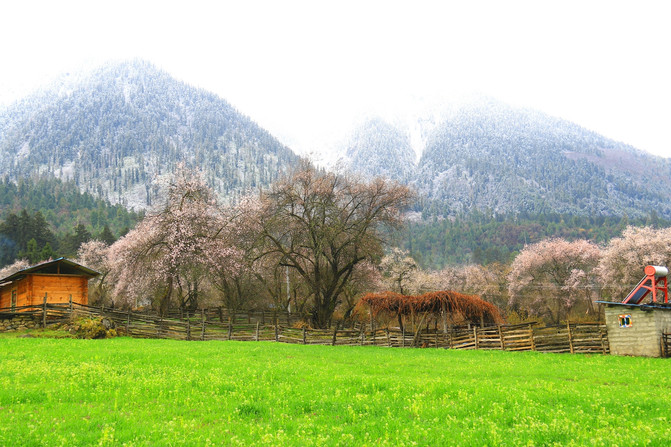
Xizang-Bomi-Gangxiang Nature Reserve-Scenery along the way

Tips:
1. Midui Glacier Scenic Area is less than 10 kilometers away from National Highway 318. After buying a ticket at the gate, you can drive the car directly in several kilometers and park it in the parking lot of Midui Village. If you don't stay in Ranwu, some families in Midui Village provide accommodation, and the altitude here is very low, only about 2000 meters.
Xizang-Bomi-Midui Glacier

Xizang-Bomi-Midui Village
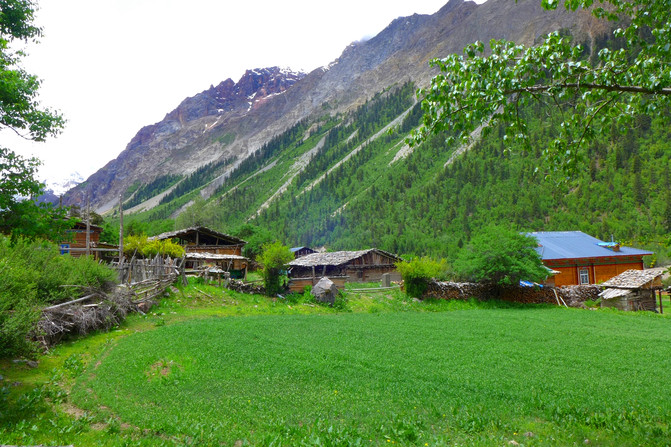
2. Gangxiang Spruce Forest Scenic Area and Gangcun are both in Gangxiang Nature Reserve, not far from Zhamu Town, Bomi County. There is a spectacular spruce forest stretching for dozens of kilometers, allowing you to enjoy the pure natural scenery of the original jungle. Gangcun has beautiful villages and pastoral scenery, and Tibetan families can also provide simple catering services.
Xizang-Bomi-Gangxiang Nature Reserve-Gangxiang Spruce Forest Scenic Area

Xizang-Bomi-Gangxiang Nature Reserve-Gangcun

Xizang-Bomi-Gangxiang Nature Reserve-Gangcun

Xizang-Bomi-Gangxiang Nature Reserve-Scenery along the way

3. Although the Mezha Highway from Bomi to Medog has been opened to traffic, the road conditions often change greatly due to factors such as special geographical structure and climate. In addition, it is said that due to restrictions on traffic conditions, a one-way traffic system of "double entry and single exit" is now implemented for entering Medog.
Xizang-Medog-Mezha Highway-Galongla Tunnel

Xizang-Medog-Mezha Highway-Scenery along the way

Seventh station: Bomi-Lulang (160 kilometers)
Leaving Bomi and heading in the direction of Lulang, you will pass through the legendary Tongmai Natural Danger. In the past, due to the complex geographical structure of this area, serious natural disasters such as mountain landslides, roadbed landslides, and mudslides were often encountered. Sometimes roads were blocked for more than ten hours or even three days. In the past few years, the state invested heavily in rebuilding the Tongmai Bridge and the Pulonggou Bridge here, avoiding places where landslides and mudslides often occurred in the past, and successively excavated and opened several tunnels, fundamentally changing the traffic conditions for National Highway 318 passing through this area. From then on, Tongmai Natural Insurance has completely become history. Now, it only takes ten minutes to drive a car to smoothly pass through this place once known as the "Tongmai Natural Insurance". The dangerous road has become smoother, fast and safe. After passing Tongmai, we continue to move forward and arrive at another particularly suitable place to stay-the international tourist town of Lulang.
Xizang-Bomi-Tongmai-Tongmai Bridge

Lulang (3285 meters above sea level) is located in Bayi District, Nyingchi area. It is a peaceful town surrounded by forests and mountains. The town has an idyllic scenery of wooden houses and fences. In the distance, the mountains are surrounded by clouds, and the alpine meadows are everywhere with wild flowers. The scenery is beautiful and safe. Lulang has now developed into an international tourist town. Not only is it complete with accommodation, catering and other business venues, but there are also many high-end hotels and resorts. Coupled with its beautiful environment, Lulang has become a place for many tourists on the Sichuan-Tibet route to stay, relax and visit. place. In and near the town, there are attractions such as Lulang Huahai Ranch, Zhaxigang Village, and Lulang Linhai.
Xizang-Nyingchi-Lulang

Xizang-Nyingchi-Lulang

Xizang-Nyingchi-Lulang

Xizang-Nyingchi-Lulang-Zhaxigang Village

Xizang-Nyingzhi-Lulang-Lulang Linhai

Xizang-Nyingzhi-Lulang-Lulang Linhai

tips
1. There is a parking lot and observation deck in front of Tongmai Bridge, where you can park for rest and take photos. Walking to the left bank of the bridge, you can capture three bridges across the river in different ages, which has become a confirmation of economic development and social progress.
Xizang-Bomi-Tongmai-Tongmai Bridge

Xizang-Bomi-Tongmai-3 bridges across the river in different eras

2. Lulang has a beautiful environment and fresh air. It is worth staying here. Relax, slow down, and appreciate and enjoy everything here. The most beautiful time in the town is in the early morning, surrounded by clouds and beautiful scenery, making people feel relaxed and relaxed. Don't miss it just by sleeping in.
Xizang-Nyingchi-Lulang

Xizang-Nyingchi-Lulang

Xizang-Nyingchi-Lulang

Xizang-Nyingchi-Lulang

3. There are many beautiful scenery along the G318 Sichuan-Tibet Line, but there are often many cars and people, and the traffic is very busy. When parking for a rest or taking pictures on the way, be sure to park your car in a place that will not affect or hinder traffic safety. When crossing the road, pay special attention to traffic. When you go out, always tighten the string of "safety".
Next,"Meeting the United States in China, Feeling Poetry and Walking in the Motherland in a Distance Series 1 Comprehensive Chapter (6) Travel Guide on the G318 Sichuan-Tibet Line (Part 2)"
Next Article:For two days and one night, the meditation on Qingcheng Mountain in the forest secret realm was empty.
